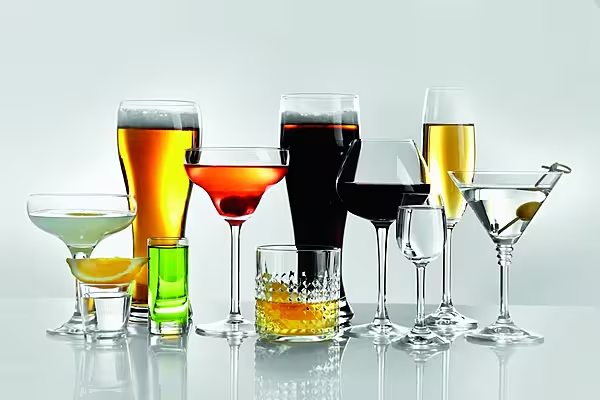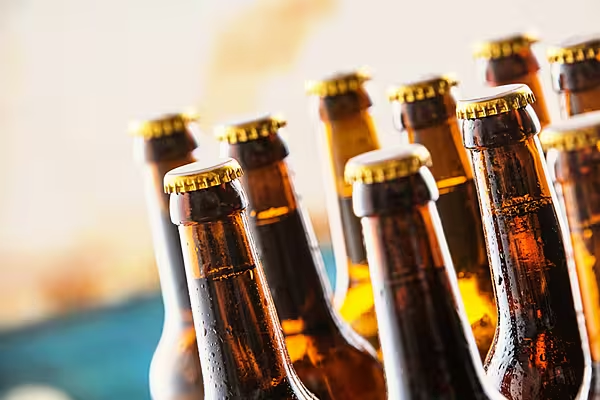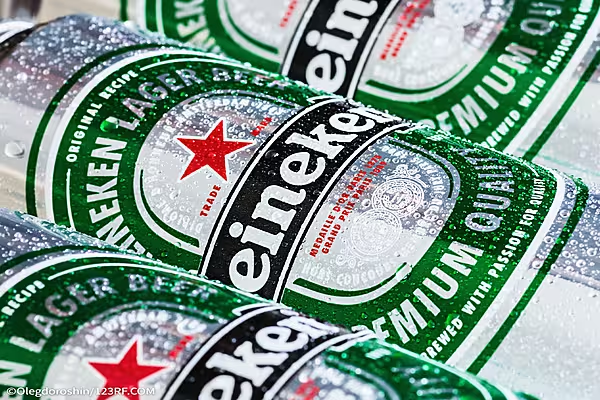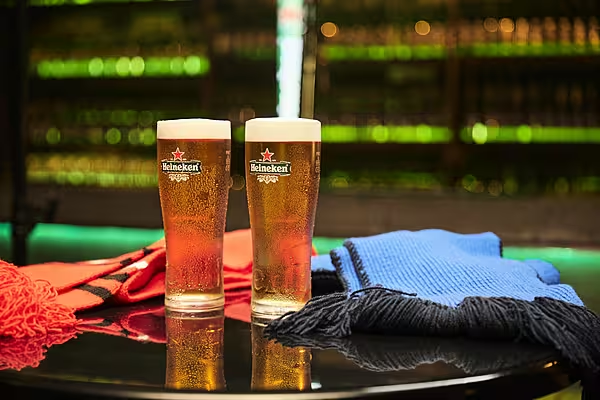Ruth Lloyd-Evans senior business insights manager, NielsenIQ, analyses the impact of the increased prices on beers, wines and spirits, resulting from the implementation of minimum unit pricing.
Minimum unit pricing was implemented on 4 January.
This means that alcohol cannot be sold below a set base price, which is determined by the alcohol content. Analysing the direct impact of the increased prices on alcoholic beverages has been challenging, particularly for the first half of 2022, as we were annualising on a lockdown and the closure of the hospitality industry in 2021.
The latest 12 weeks to 11 September are more indicative of the impact, as we are comparing against more like for like conditions.
However, there is an added complication – the waters are muddied by the current inflationary pressures.
CPI for August is currently at 8.7% (CSO.ie). In addition, the latest 12 weeks reflects the unusually warm and dry summer, which normally drives up alcohol sales.
Based on the latest NielsenIQ data, price inflation (% Change Price Per Kg/L 12 WE 11.09.22) is up by 9% for defined grocery food, and by 10% for beer wines and spirits.
Many consumers are cutting back in order to manage costs, and alcohol is a discretionary category for most. In our latest local consumer survey, 66% of consumers responded that they were cutting back on alcohol purchases as a direct result of MUP, which is reflected in the 10% volume decline that we have seen in the latest 12 weeks.
However, the decline in sales is not entirely due to MUP.
Volume sales for beer, wines and spirits in Great Britain, where
MUP has not been implemented, are also experiencing a decline of 6% in volume (litres) in the latest 12 weeks to 10 September 2022.
In the coming weeks, some consumers may scale back on alcohol purchases in the off-trade sector, to balance the cost of other grocery items.
For others, a night out may be sacrificed in favour of a night in, which could lead to more in-home consumption. In a recent October consumer survey, 54% of Irish respondents said that they plan to mitigate increased cost resulting from MUP by entertaining more at home.
This is up from 43% in our April survey.
Consumers that plan to drink more out-of-home in pubs/clubs decreased from 33% in April to 29% in October. Preference for in-home consumption will obviously be good for off-trade brands.
Overall consumption for total Long Alcoholic Drinks and spirits in the on- and off- trade combined is down by 4% (volume litres in the 12 weeks to end of August 2022).
There has been some shifting of volumes back into the on-trade, where beer and spirits sales are up by 8%, while off-trade volumes are down by 10% for the same period. (On-trade insights provided by CGA).
Beer sales are the main driver of the shift.
Even though MUP is not a factor in the on-trade, price per litre for beer in the 12 weeks to 31 August has increased by 8% – a night out is more expensive than it was this time a year ago.
MUP has had the most significant impact on off-trade beer, pushing up the average price per litre by around 14%.
The price per volume for a beer in a pub is still more than twice the price compared to in-home consumption (price index of the on- versus off-trade has narrowed from 2.5 to 2.3).
Cross Border Shopping
Cross border shopping may entice some shoppers to cross the border to Northern Ireland and stock up on alcohol and other groceries there, (MUP has not been implemented in Northern Ireland). At the time of writing, the exchange rate is at €1.15 to £1.00 GBP, which is lower than this time last year.
However, the exchange rate was near parity during the recession, when we last observed shoppers crossing the border in order to save.
The weaker the pound, the greater the incentive to shop over the border, but the current high cost of fuel acts as a disincentive.
Current regional performance for the latest 12 week indicates that the border counties are performing better than the rest of Ireland for alcohol, with volume declines of 4% compared to 10.6%.
This latest 12-week period encompasses the summer holiday period, which may be a contributory factor, or it may simply be that the incentive on saving on beer, wines and spirits is not worth the time, fuel cost etc. of stocking up across the border.
It remains to be seen if shoppers will react differently at Christmas.
Changing Pack Formats
As a result of MUP, the pack formats of the long alcoholic drinks that we buy at Christmas this year will be different to previous years.
Historically a big seller during the Christmas period, slabs (24-pack cans) are unlikely to have as significant a presence in retailers in Ireland this year.
As a result of MUP, the retail price, at €40-€45 compared to €20-€25 a year ago, is likely to be a barrier for many consumers.
Last Christmas, slabs made up approximately 13% of the value sales for long alcoholic drinks (LADs) and 23% of the volume sales in the eight weeks to 26 December.
So how are pack formats currently performing? In our October consumer survey, 48% of shoppers are opting for smaller pack sizes, which is up from 43% in our April pulse.
In the latest 12 weeks to 11 September, the eight-pack can format is declining, and the share of volume sales that four-packs and six-packs account for has increased. Four- and six-packs combined accounted for 22% of LADs sales a year ago, but now make up over a third of volume sales.
The trend at St. Patricks Day and Easter 2022 was a trade up into 15 packs and 10 packs, so this is likely to be an indicator of the trend for Christmas 2022, with a shift of volumes into the mid-sized pack formats.
LADs
Within LADs, stout is performing ahead of the curve, with volumes down by 3% compared to the total LADs market, which is down by 10% (litres 12 weeks to 11 September 2022). Innovation and new product development have been a key driver in this sector.
In lager, world beers (Italian/Spanish/Portuguese brands) are currently outperforming mainstream brands, with volume growth of 4.4% in the latest 12-week period.
Craft beer has been a niche but popular sector in recent years.
The definition here encompasses local ales and lagers and accounts for approximately 6% to 8% of total lager/stout/ale sales in the latest 12 weeks.
However, value and volume % change is declining behind the total beer category.
Craft beers are typically 50% more expensive per litre than the average for the beer category.
Under 2021 legislation, single unit multi-buys are prohibited.
This had a negative impact on sales in this segment, where multi-buys were a popular promotional mechanic.
The price differential and the limitations on promotion have slowed the growing popularity of craft beers.
In addition, the fragmented nature of the range, working across many suppliers, can prove challenging for retailers.
While there has been some shifting into four-packs, in particular, the bulk of craft beers are sold as single bottle units, and in the latest 12 weeks, volume % change for craft is down by 16%, which is performing behind the average for total LADs.
Wine
Wine was less impacted by MUP, as approximately 10% of wines sold in the Republic of Ireland grocery sector is retailed below the MUP threshold of around €7.50 per bottle.
In the latest 12 weeks, volume sales of table wine are experiencing a 6% decline, which may be driven by shoppers rationalising spend due to inflationary pressures.
The increasing expense of back-to-school and back to extracurricular activities after the summer period may have curtailed purchases.
Sparkling wines traditionally do well over the Christmas and New Year periods, and ringing in the new year at home may be more tempting for many, as post inflation blues may be hitting home.
Prices of sparkling wines have increased very little, by just over 1% in price per litre in the latest 12 weeks, yet volume sales are down in the same period by almost 13%.
© 2022 Checkout – your source for the latest Irish retail news. Article by Ruth Lloyd-Evans. For more drinks news, click here. Click sign up to subscribe to Checkout.









